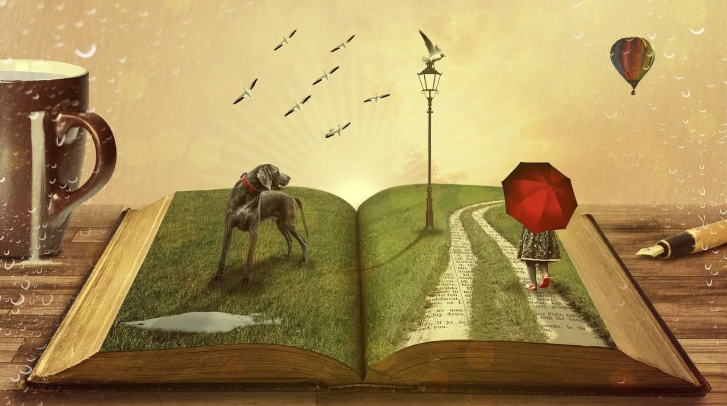An instruction book for life

The internet is overflowing with “how-to” content. How to bake the perfect vegan carrot cake. How to build a DIY chicken coop. How to care for your saltwater fish tank.
I’m a sucker for a good step by step how-to. People click on how-to’s. People have problems that need solving and guides offer neat foolproof solutions. Just look at the way books, blog titles and YouTube thumbnails are worded and structured these days. Is this your problem? Well, here’s the fix. No need for trial and error. Just follow these steps and success is guaranteed.
And when it comes to changing a car tyre or baking a cake, that approach usually works a treat. Someone else has done all the hard work of experimenting and making the mistakes. They have found all the efficiencies. As long as the tools, conditions, and ingredients are replicable, then all you have to do is follow the instructions. If your oven is accurate and your flour behaves, your carrot cake should, in theory, turn out just as moist and perfect as the one pictured in the post.
But even with cooking, real-life variables creep in. Ovens run hot or cold. Flour absorbs differently. Your altitude or humidity or tastebuds might be slightly (or wildly) different. A good how-to anticipates this, offering flexibility and principles, not just instructions. It teaches you to become a better cook, not just a recipe follower.
The trouble starts when we apply the how-to model to human problems.
Humans are not a mix of tidy, measurable ingredients in a controlled kitchen. Our contexts, capacities, traumas, needs, privileges, and nervous systems vary wildly.
Sure, some generalisations are useful. Many of us respond to certain things in similar ways — we can learn from that. But when advice assumes universality, it ignores what makes us human: our nuance, our specific wiring, our lived experience. And it doesn't work.
Still, who can blame us for craving a manual for life? I want a recipe that tells me exactly how to cultivate a healthy marriage. I want a set of steps for ensuring my kids will grow up happy and confident. I want a written procedure for how to reach inner peace.
I’ve chased that “holy grail” book — the one that would finally crack the code. The right words, the right philosophy, the right steps to follow. Surely it’s out there...I just haven’t found it yet.
I remember devouring how-to guides for giving birth naturally, and then for newborn care, convinced if I followed every step to the letter, there would be a predictability, a cause & effect, that things would be controlled. The birth of my first child was my first big dose of reality check. My body and my babies did not behave as predicted.
Later, I turned to self-help content and therapy modalities, but I had little luck there either. No, I can’t calm down by naming five things I see and four things I can touch — doing so just makes me more agitated because now I’m trying to gaslight my nervous system. And no, I can’t just meditate five minutes a day because some study says it’ll improve my mental health. My brain goes into revolt at the thought of sitting still even for a second.
Then came the labels: Autism, ADHD, PDA, C-PTSD… I thought if I could just identify all my labels accurately enough, I could find someone “like me” who had already figured it out and had all the answers. And I could copy what they did.
But the reality is, even within the neurodivergent and trauma-informed spaces, we are so vastly different. The labels are useful; they help name things that have long gone unnamed. They create connection, language, solidarity. But they also reduce and oversimplify. They offer clues and can lead to real insight — but they don’t paint the whole picture.
There have been many sources of incredible knowledge and wisdom since then in all different forms, but I never did find that one holy grail instruction book.
When we skip straight to solutions, we miss the deeper learning that comes from actually being with ourselves. The fumbling and failing, as painful as it is, is what leads us to finding our own rhythm. Most how-to’s assume a universal starting point, but in reality, we each begin somewhere completely different.
That’s hard, especially when you’re in pain and you need solutions right now. When you’re holding a baby who won’t stop crying, or stuck in patterns you’re desperate to change. Of course we want a silver bullet.
But if what we’re after is true growth — deep change, peace, freedom — we don't need a recipe. A little bit of breathwork here, a dash of some self-development course there, or whatever worked for someone else. There are underlying wisdoms and principles that we can extract. But mainly we need to be in relationship with ourselves. By learning about our nervous systems, emotional world, our physical bodies, and how they have been shaped by past events and context and neurobiology, we arrive at our own insights about our own complex selves, not about other people. What would happen if we shifted from problem-solving mode to a self-compassionate curiosity mode and a deeper kind of observing and listening? What would happen if we stopped aiming for a target and instead stopped and looked around at our surroundings?
We are not problems to solve. We are miracles unfolding. We are living systems, wonders really, full of potential, deserving of curiosity, care and deep awe
This is not to deny the existence of problems. And how-to's have their place. But if we are interested in delving deep beneath the surface, then instead of doing so with the aim of fixing ourselves, perhaps we are better off seeing the journey as one of finding our way home to ourselves.

